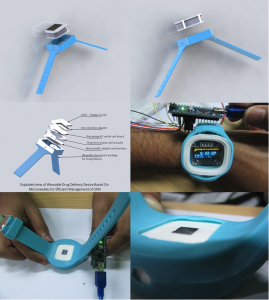
Emesis in general is natural defensive mechanism of the body to prevent the absorption of the noxious substances in the Gastro Intestinal tract by forceful expulsion of contents. National Cancer Institute at National Institute of Health explains the phenomenon, ‘Nausea is a subjective phenomenon of an unpleasant, wavelike sensation experienced in the back of the throat and/ or the epigastrium that may culminate in vomiting (emesis). Vomiting is the forceful expulsion of the contents of the stomach, duodenum, or jejunum through the oral cavity. Retching is gastric and esophageal movements of vomiting without expulsion of vomitus and is also referred to as dry heaves.
In general emesis doesn’t attract much attention from clinicians unless otherwise associated with serious problems. Emesis is most pronounced and prevalent in case of nausea and vomiting in pregnancy (NVP) and chemotherapy induced nausea and vomiting (CINV). Prevention and control of emesis are of paramount importance in the treatment of cancer patients and also in case of pregnancy otherwise may ground in serious health concerns. Hence our research is focused and oriented towards targeting NVP and CINV.
The parenteral and enteral routes mentioned has several disadvantages such as poor patient compliance, painful in case of injections, not feasible for self-administration, high cost, poor absorption, poor bioavailability, lack of programmability. Administration of higher doses due to poor absorption results in many side effects ranging from less serious to more serious viz., fever, hearing loss, constipation, ringing ears, severe stomach pain, allergic reaction marked by swelling face or throat, CNS depression, disturbed cardiac conduction. It is also reported that antiemetic drugs are responsible for manifesting teratogenicity resulted in congenital malformation of fetus in case of NVP.
We believe effective care of the most hard-to-treat conditions requires approaches beyond simply taking medicine / applying patch. NVP and CINV are prolonged / chronic medical conditions. NVP needs the medication for period ranging from 4-5 months from the first month of gestation for and for CINV till the chemotherapy goes on and even
after that for the delayed emesis.
At the onset, we have oriented our proposed research towards the designing of novel and alternative approach for addressing the emesis by developing the wearable bioinspired microneedle based transdermal drug delivery patches which imitate the same mechanism of pharmacological actions exhibited by current mode of administration and doses of drugs used for treatment of emesis without any notified side-effects and better patient compliance. Also, for the first time with our wearable therapeutic gadget, we are transforming how medicine is delivered and how people achieve health-goals through convergence of drug-delivery, medical microsystem technology, with connected and personalised behavioral support.
Our proposed research promises to deliver the solutions which may be ableto address and mitigate problems associated with treatment of emesis more specifically in case of NVP and CINV ranging from patient compliance to drug-delivery and even the therapeutic challenges with personalised behavioral support.
Prof. Rohit Srivastava
